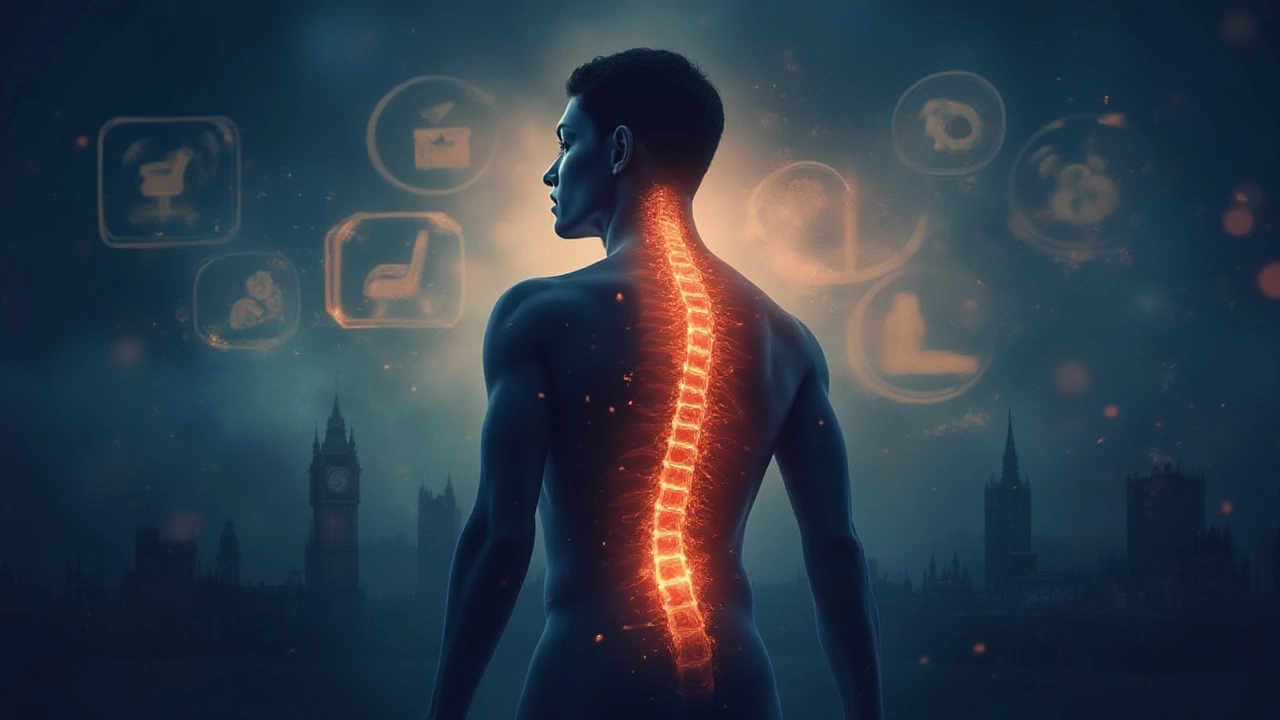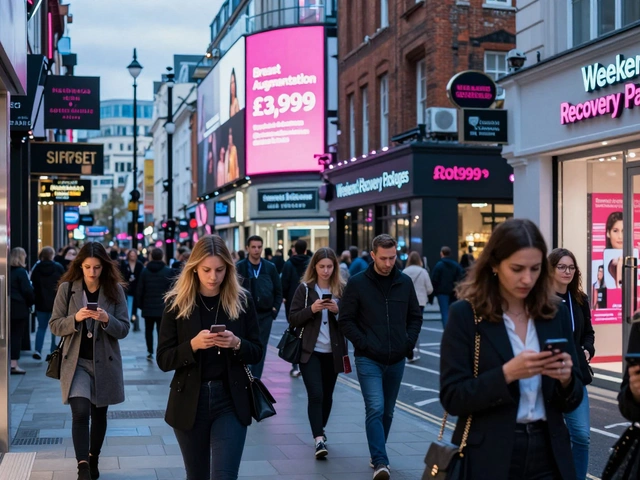Imagine waking up and suddenly you can’t tie your shoes because your back is in agony. For millions, this isn’t a bad Monday, it's daily life. Back pain is behind more sick days than anything else—so you’re definitely not alone. But when your muscles lock up, regular painkillers barely take the edge off. That’s when people search for the strongest muscle relaxer, hoping for a magic pill that lets them move, work, and sleep like a human again. Turns out, the answer is more complicated (and interesting) than most expect.
How Muscle Relaxers Work: More Than Just "Turning Off" the Pain
Most people think muscle relaxers are like an off switch for pain, but the reality is less sci-fi and a bit more clever. They don’t magically untangle knots in your muscles. Instead, these meds target your nervous system, dialing down the "messages" that scream tightness and spasms to your brain. When your body gets stuck in spasm mode—a defense trick that quickly turns into the enemy—muscle relaxers let your back muscles chill out.
So what kind of back pain can they really help? The best results show up for acute flare-ups (think muscle spasm after lifting something wrong), not long-term chronic pain. A key fact: Over 80% of people will get back pain at some point, but only a slice benefit much from muscle relaxers. Most of these drugs are best for short bursts—just enough to break the pain cycle and help you move for rehab or sleep at night.
Doctors usually split them into two groups: antispasmodics and antispastics. Both relax muscles, but in slightly different ways. Antispasmodics (like cyclobenzaprine) work best for sudden injuries and spasms from things like a pulled muscle or herniated disc. Antispastics (think baclofen, tizanidine) are used more for conditions like multiple sclerosis or spinal cord injuries where muscle tightness sticks around.
One thing you might not expect? Muscle relaxers don’t heal your back. They’re like hitting the mute button so you can get through stretching, physical therapy, or sleep. That’s why most healthcare pros warn against using them long term—side effects ramp up, results fade, and your body can even start to depend on them.
The Strongest Prescription Muscle Relaxers for Back Pain
Ready for specifics? Here’s what doctors reach for most when back pain is screaming for relief. The biggest muscle relaxer heavy-hitters in the UK and other countries are about the same, but access varies by where you live.
- Cyclobenzaprine (brand: Flexeril) – Probably the most prescribed for acute back pain. It calms the nervous system and helps people sleep through the night. Most studies report it works best for short-term use (max 2-3 weeks).
- Diazepam (yes, Valium!) – Actually a benzodiazepine used for anxiety, but also super effective at knocking down severe muscle spasms. It kicks in fast, but it’s habit-forming and sleepy-making, so usually a last resort or for extreme flare-ups.
- Baclofen – More common with spasticity from nerve issues, but sometimes prescribed for really stubborn back muscles. It calms reflexes that cause tight muscles.
- Tizanidine – Similar action to baclofen but with slightly different side effects. Can make people feel weak or a little foggy.
- Methocarbamol and Carisoprodol – Used a lot in the US, less so in the UK. People report a “relaxing” effect but they’ve got their own downsides—like sleepiness, addiction, and generally being a bit rough on your system.
Cyclobenzaprine and diazepam top the list for sheer strength and speed of relief. But here’s a catch: stronger doesn’t always mean better for recovery, and side effects grow with the punch of the drug. Different muscle relaxants have their own quirks and risk profiles. One size definitely doesn't fit all.
Here’s a quick look at what’s prescribed most often and why people might switch between them.
| Drug | Best for | Speed | Common Side Effects |
|---|---|---|---|
| Cyclobenzaprine | Acute back spasms | 1-2 hours | Drowsiness, dry mouth |
| Diazepam | Severe spasm, anxiety-driven pain | 30-60 minutes | Extreme drowsiness, habit-forming |
| Baclofen | Chronic spasticity | 1-2 hours | Weakness, nausea, confusion |
| Tizanidine | Muscle spasm with nerve pain | Within 1 hour | Drowsiness, dry mouth, dizzy spells |
Guidelines in the UK say to keep doses low, use muscle relaxers for the shortest time possible, and never combine with alcohol or other sedatives. Most people actually just need a week or two, not months on end.

Risks and Side Effects: What Doctors Won't Always Tell You
If you’re picturing muscle relaxers as a safe, miracle fix, time for a reality check. Side effects are almost a guarantee—the stronger the relaxer, the more likely you’ll feel woozy, sleepy, or downright weird. Cyclobenzaprine and diazepam, for instance, are infamous for next-morning ‘hangover’ sensations. If you’ve got stuff to do (like, life), chills, mental cloudiness, or needing extra naps aren’t great.
Statistically, people over 60 have a much higher risk of falls or accidents when using prescription muscle relaxants. The sedative effect can sneak up on anyone, and even cause trouble breathing if you mix with alcohol or certain painkillers. These meds can also interact with antidepressants and blood pressure drugs, ramping up complications before you know it.
Long-term risks? Tolerance builds quickly. That means you need higher doses to get the same relief, which raises your risk for dependence. Carisoprodol, diazepam, and even cyclobenzaprine can be addictive if you’re not careful. There’s also a conversation around withdrawal symptoms—people have noticed shaky hands, racing heart, or anxiety after suddenly stopping long-term use.
Headaches, nausea, blurry vision, and even weird taste in your mouth (looking at you, cyclobenzaprine) are all reported. Some people get heart palpitations or serious drops in blood pressure. If you’re not sure how a medication is going to hit you, try the first dose at night. Plan for a lazy morning—you might need it.
Pregnant? Breastfeeding? Most muscle relaxants are a no-go, so talk to your doctor. And don’t be shy—older people or anyone with a history of liver or kidney problems need extra care. Short version: ask, ask again, and keep track of any weird side effects—you’re the best judge of how your body is reacting.
Natural and Non-Prescription Alternatives: Do Any Really Work?
Not everyone wants to go the prescription route, and for good reason. Plenty of people skip meds and get surprising relief with simple fixes. Ice and heat, for example, can make a big difference—ice calms fresh spasms, heat loosens old, stiff muscles. Stretching and simple yoga flows really do prevent muscles from seizing up or overreacting.
Massage therapy was actually found to be as effective as some oral muscle relaxants in a recent Cochrane review—no side effects, just a professional kneading out those knots. Try pairing massage with topical muscle rubs (think menthol creams or tigertail balms) for an added kick. Plain old swimming or gentle walking is another underused trick—getting moving helps flush out muscles and stops spasm cycles.
There’s buzz online about magnesium supplements, since low magnesium is linked to cramps and muscle tightness. Research is still shaky, but getting enough from your diet—spinach, almonds, pumpkin seeds—certainly won't hurt. And there’s one home gadget worth a mention: TENS devices. They use tiny zaps to “confuse” nerves and block pain signals. Some patients swear by them for back flare-ups.
Sound weird? Placebo effect is powerful, but several studies noted TENS and acupuncture both give more than a sugar-pill boost. They’re especially useful when muscle relaxers leave you foggy or you want to dodge side effects.
But here’s the deal: These natural tools work best as a package, not a substitute. If your pain’s severe or keeps coming back, pair the best of these with your doctor's advice and proven meds for results that last.

Tips for Getting the Best (and Safest) Results With Muscle Relaxers
Found yourself with a fresh prescription in hand? Start with the lowest possible dose. Some people score good relief from a half or even quarter pill—don’t jump to the maximum strength right away. Always take your muscle relaxer at night the first time, because drowsiness is nearly universal. Keep an eye out for weird side effects, and let your doctor know if anything feels off—don't just “tough it out”.
If you’re also taking painkillers like codeine or strong NSAIDs, be cautious: most combos boost the risk of feeling dizzy or slow. Alcohol is a no—really. The combo multiplies sedation and can mess with your breathing.
Try to use muscle relaxers as a bridge to more active solutions: start gentle stretches or physical therapy as soon as possible. These drugs are not meant for months at a time—UK guidelines and NHS recommendations say max 2-3 weeks in almost every case. Sticking to short use lowers the risk of tolerance and addiction.
Don’t drive or operate power tools until you know how a muscle relaxer hits you. Even the day after, you might not feel fully clear-headed. For older adults, motion sensor nightlights in the hallway and bathroom can help avoid falls. It sounds overcautious until you see the stats: hip fractures spike in those taking sedating meds.
Common sense matters. Take your prescription at the same time each day, store it away from kids (these drugs can be deadly to little ones, even in small amounts), and don’t double doses if you forget one. If you’re on any antidepressants, sleeping pills, or blood pressure meds, tell your doctor—they might want to check your meds for risky overlaps.
Dive into treatment with open eyes. Track how you feel in a notebook or your phone. If the drug isn’t helping after a few days, or side effects overwhelm any benefit, ask for a swap or stop. Sometimes it takes a couple of tries to find what actually suits your body best.
Your main takeaway? The strongest muscle relaxer trades a longer list of side effects for possibly faster relief. Use that power wisely, stay proactive about the bigger picture, and remember—a pill should give your back a window to heal, not just a nap and a blank prescription for life.





